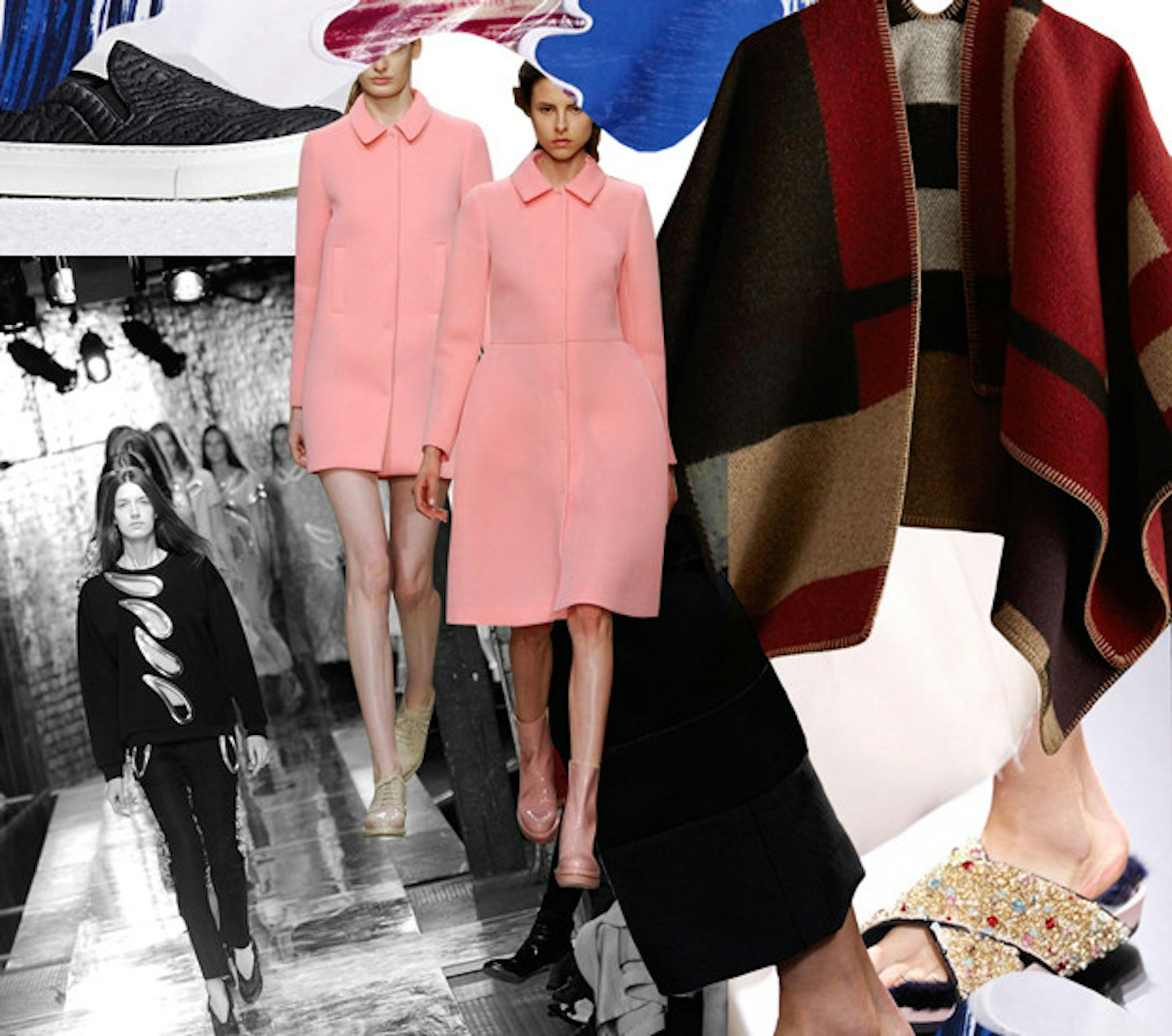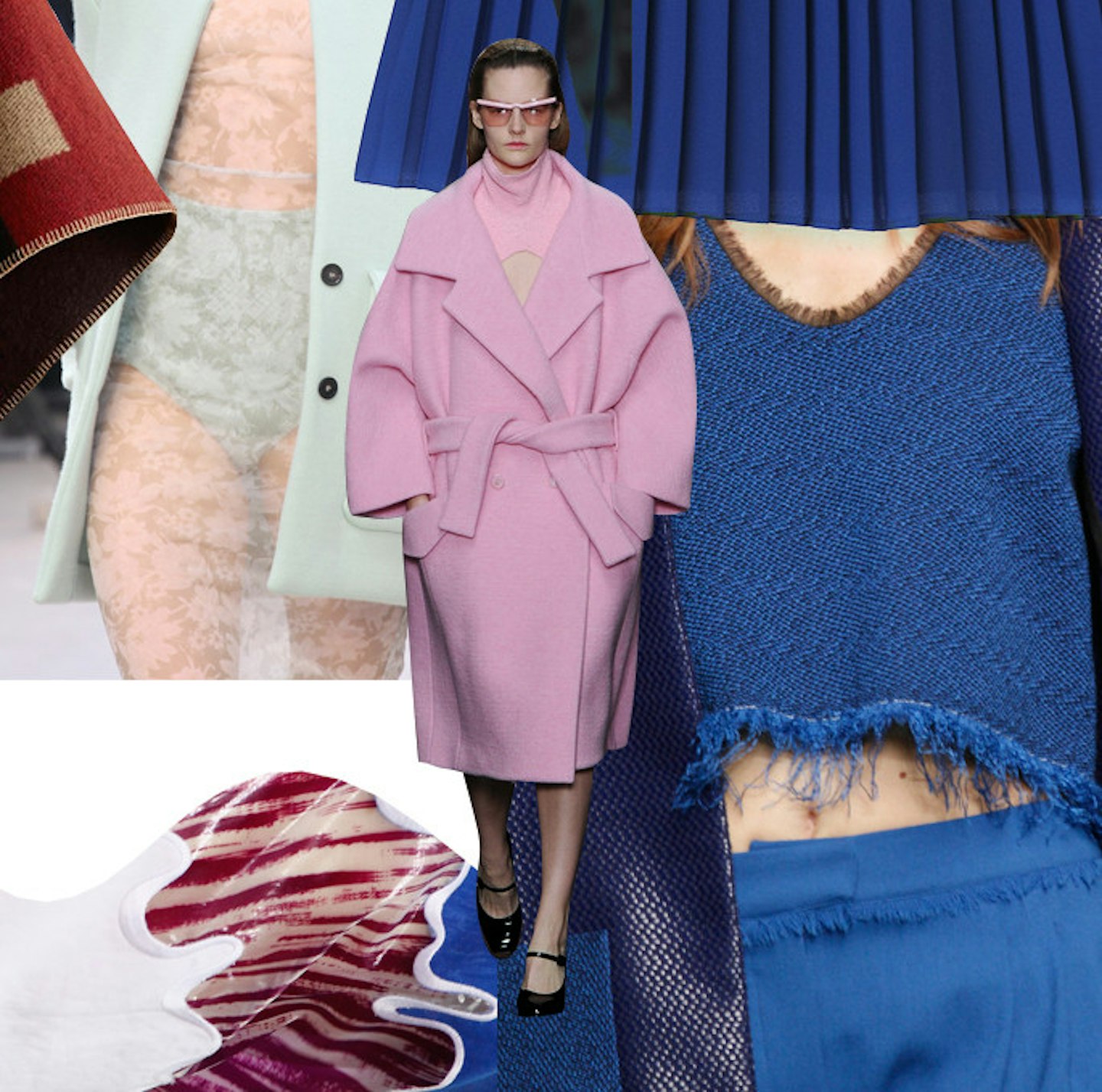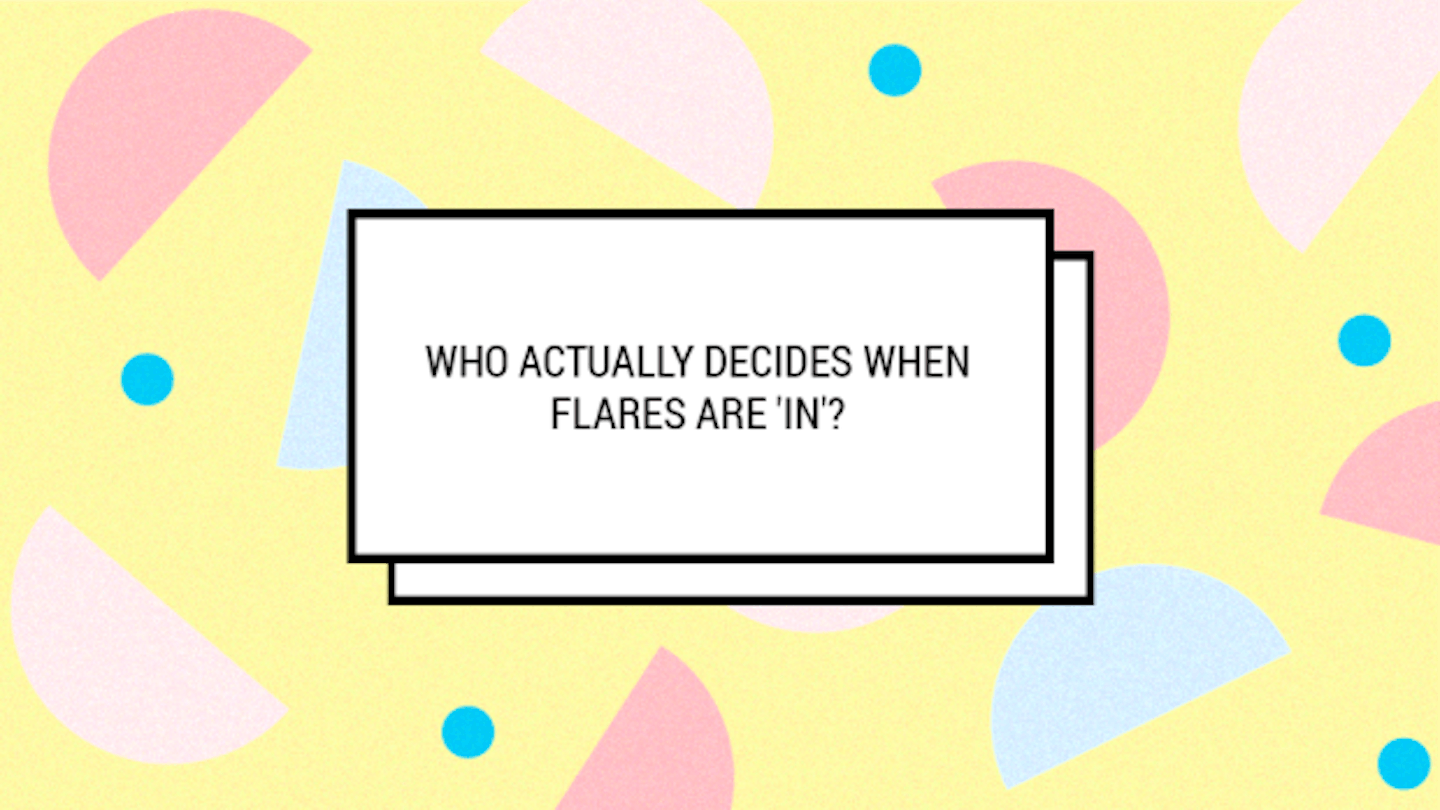'Flares are... back? As in actually back? Like they were when we were fifteen and you wore Miss Sixty kickflares that had poppas all the way down the outside seam, that you could rip open in one flamboyant flourish?' might say your flatmate, doubtfully, when discussing your impending autumnal wardrobe. 'Yes!" you might reply, as joyful as she is sceptical. 'In fact, I've just ordered that exact same pair from Free People online.'
That, Debriefers, is one of many moments in which you may be struck by the weird, wonderful and cyclical world of 'the fashion trend.' Out of nowhere, seemingly, trends appear - persuasive, beguiling and before you know it ensuring that you clothe your bod with the very thing you swore you'd never ever wear again.
The weirdest bit of all this is the whole appearing 'out of nowhere' part. Every season we're faced with a bunch of brand new trends via the glossies and the catwalk that just seem to appear perfectly in tandem. How is it, you wonder, that 15 designers all paid homage to the sheer skirt? Or, this season, culottes, flares, capes, matching knitwear and over the knee boots, amongst other things. But why? How? Do they communicate in fashion braille? Where do trends actually hail from?

READ MORE: It's August - So Why Can't We Buy Any Summer Clothes In The Shops?
To answer such existential questions, The Debrief turned to Catriona Macnab, Chief Creative Office at WGSN, the world's leading trend-forecasters who 'fuse deep insight with on-the-pulse cultural perspectives to define future trends you can rely on.' To break that down for you, a trend-forecaster predicts what people are going to be wearing (as well as eating, visiting, reading...) in both the short term and the long term future. WGSN offers a subscription service to which a fashion designer, or creative director, can can access their predicted trends and interpret them for their own particular market, depending on if the brand is luxury or mid-level. For e.g. Tom Ford will interpret a forecasted trend different to H&M. 'We leave the way in which trends are interepreted for the industry to decide' explains Catriona. So stores and labels like Nordstrom, John Lewis and Next subscribe to receive WGSN's intelligence and cherry pick which trends they choose to weave into their next collection.
Where does WGSN's unique 'intelligence' come from? Well, a number of sources. 'We've been in trend forecasting for quite some time at WGSN, so we have very experienced designers and researchers filtering information from around the world. We have offices in London, Shanghai, New York - everywhere and a retail tool called INstock which gathers information from 3,000 online brands and retailers. And what we do is gather local trends throughout all our global offices and marry them with global trends. Local trends' happening in your country, even your city, 'are so important to us. They are the fastest moving ways in which trends are evolving.'
For the fashion designers, brainstorming their new collection - often more than a year before it is actually produced - a trend-forecaster is essential. Fashion designers don't just sit there with a needle and thread; they look to all areas of society in order to both literally and metaphorically weave these changes into the fabric of their collection, so that it means something to the consumer. Remember that epic moment in The Devil Wears Prada when a calm Meryl Streep explains to a sceptical Anne Hathaway why that very blue belt that she is holding, represents millions of dollars and countless decisions? 'Designers are aware of big shifts in society' days Catriona. 'Things go around that designers will be looking at, but they can’t be aware of everywhere around the world that is happening at the same time. They will have a more limited view of what is out there in the marketplace.' That's, of course, where WGSN comes in, giving them a 360 degree vision of the future 'scape.

Invention is also a large part of it; take Tyvek's recent invention of the paper trainer. 'New fabric developments and the new forms of wearable technology are influential to a designer. Everyone is looking at what everything else is doing in business. Influential designers will influence other designers, of course - but no-one would copy another designer too closely, it would be considered hugely unprofessional' says Catriona.
So, how predictive can Catriona and her colleagues really be? The answer is, very. 'We can track what's happening literally all around the word. If something's happening in one city, we'll track that and see where it might hit next and next and next....' The pace has got even faster, with the advent of six week collections (like new Aussie label, The Fifth who literally produce a whole new collection of clothes eight times a year) and pre-seasons and resort (for your holidays) collections. 'The customer now demands instant fashion and they want the trends worn by celebrities, immediately. So we have to react to it. It can change even weekly.'
Trend-forecasting has become increasingly global. 'It's not just about the Big 4 (Milan, London, Paris and New York) in terms of fashion week anymore. There's Stockholm, Beijing, Sao Paulo... to name a few.' Meaning that there are way more forums from which trends may spread across Instagram, blogs and the suchlike. Secondly, e-commerce (essentially the fact that we can/do all shop online and internationally) has made fashion trends increasingly globalised. 'Primark is moving into the US, ASOS is obviously all over the world. So this global outlook in trends is changing things a lot - and meaning that local trends can spread much quicker.' In short, that DM and kilt combo that you saw on Redchurch Street just a few weeks ago? A wily forecaster from WGSN might spot that, write a report - 'we spot things as they are happening on the ground' - and chunky boots and kilts will be popping up on ASOS España, who read the local trend report, within just a month. Before you know it, some Madrilenian chick will have adopted an East London uniform.
Cultural events happening throughout the year are also huge influencers: films, festivals, art exhbitions. 'Take the kimono, which was such a big thing this summer. It was because of Coachella', which has become a big influencer on summer fashion. When the season changes and we pack away our kimonos, just like a migrating bird seeking sunnier climes, the trend tracks down to Australia, as they move into the summer season. Another influencer is developments in society, including shifts in gender politics. The way that women are perceived in the workplace, for example has led to us wearing metallics. 'The whole suited and booted aetshetic has become outdated' - look at Victoria Beckham and her work-friendly power dresses - 'and people are more accepting of what women can wear to work, which has led to a shift in what's acceptable to wear for daytime, too. That includes metallics - which have always been seen as an evening palette. That rule has completely been blown out of the water this season.'
Some trends hang around longer than others, obviously. 'Versatile trends will survive', explains Catriona. For example, pink. 'You can wear pink in many ways, different shades, different materials - which is key to its longevity.' Niche trends won't last long. For example, the onesie. 'The onesie is over because it flooded the market. It became a family trend; it wasn't cool anymore. Also, when someone flashes up really big like that, you can also predict when it will end.' So there you are, folks. Don't tell us you never learn anything new. You'll be looking at that glittery camisole in Topshop with whole new eyes now, won't you?
Like this? Then you might be interested in...
Here's How To Make Your Summer Wardrobe Work For Autumn, Too
It's Payday! So We're Going To Persuade You To Buy This House Of Holland Dress
We Try On All The Clothes In Lidl, So You Don't Have To. And Yes, We Said Lidl
Follow Pandora on Twitter @pinsykes
Artwork: Anna Jay; Pictures: Jason Lloyd-Evans
This article originally appeared on The Debrief.
